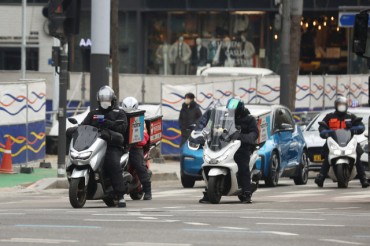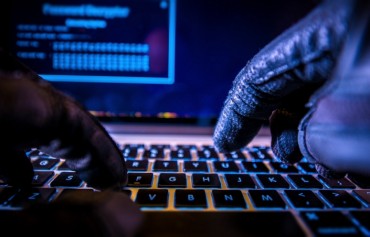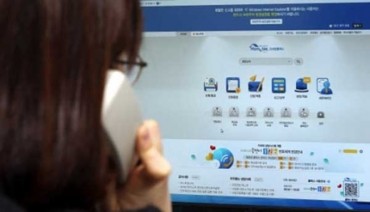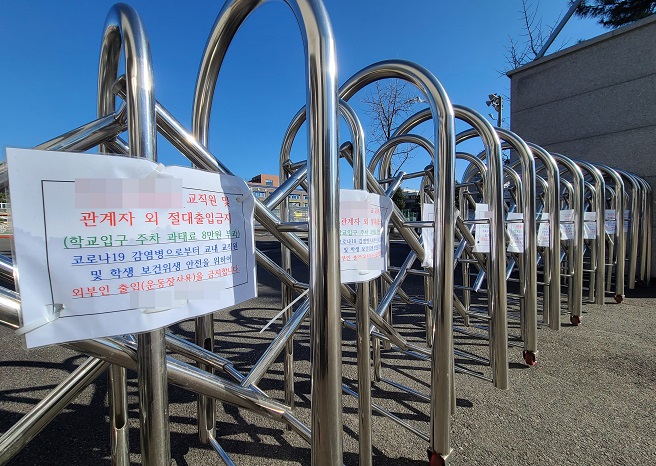
The undated file photo shows the gate is closed at a school that has switched to remote learning only.
SEJONG, April 13 (Korea Bizwire) – South Korea has recently experienced a flare-up in virus cases, with outbreaks occuring at schools that opened in early March for the spring semester, putting to test the ability of health and education authorities to keep schools safely open.
Education Minister Yoo Eun-hae visited a high school in Anyang, south of Seoul, on Monday to inspect efforts to contain the virus in and out of classrooms.
She had originally planned to visit an elementary school, but changed the plan at the last minute, the ministry said, because “high school students have more activities outside school and there was a need to check the overall situation.”
Since the new school year started in March, middle and high schools have reported more infection cases than elementary schools.
According to the Seoul Metropolitan Office of Education, one official in a middle school in Dongdaemun Ward tested positive for the coronavirus last week, and has since infected four students.
One school official and the official’s three student contacts contracted the virus in a high school in Jongno Ward.
The two schools have resumed online-only instructions until Monday and Friday, respectively.

Students enter classrooms at a middle school in Gwangju, 330 kilometers south of Seoul, on Oct. 19, 2020. (Yonhap)
A cluster infection at a cram school in Daejeon, a central city about 150 kilometers south of Seoul, has reported 97 cases to date.
Of the total number, at least 68 people are students from 16 middle and high schools. Health authorities found out that several students in one high school that reported many COVID-19 patients did not wear masks at all or failed to wear them properly.
In the southeastern city of Daegu, a cram school teacher who had contracted the virus ultimately infected 97 people, and an afterschool teacher infected 31 people in the southwestern city of Jeonju. In both clusters, schools reported the most cases.
According to health authorities, the infection rate of children aged between 13 and 15 rose to 23.1 percent in the week ending April 3, compared to 20.2 percent for the week ending March 20.
During the same period, the rate for high school students aged 16-18 also inched up to 24.6 percent from 24 percent.
The ministry said one COVID-19 patient has been shown to infect 2.49 people out of 100,000 school officials and students in middle and high schools, higher than 1.48 in elementary schools.
The finding is against the common belief that elementary school kids are more prone to infections simply because they go to school more often than older kids who spend more time in virtual learning.
As of last Thursday, the number of middle and high schools that had switched to online-only was 52, 1.6 times the number for elementary schools.
The ministry conceded that it was challenging to make sure that older students wear masks and keep distance from each other once they step outside the school.
A ministry official said the ministry has been sharing notes with education offices nationwide and is looking for better ways to help stem virus transmissions and improve school safety.
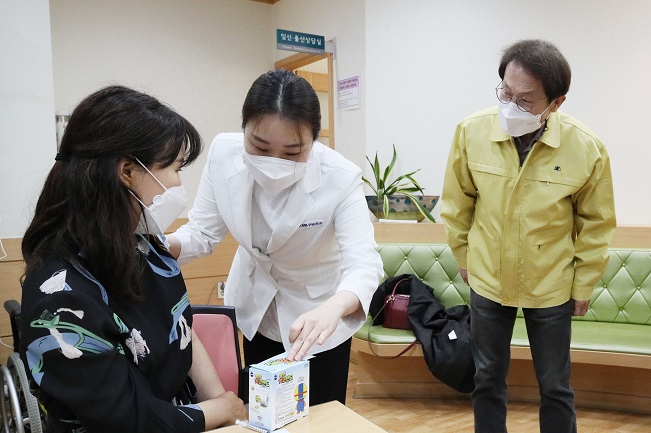
Cho Hee-yeon, superintendent of the Seoul Metropolitan Office of Education, watches a school nurse getting a vaccine shot at a community health center in Seoul on April 13, 2021. (Yonhap)
Cho Hee-yeon, superintendent of the capital city’s education office, said he will scale back in-person teaching when and if the central government raises the virus restriction level.
“The office has tried to bring more students to classrooms everyday because of learning gaps and child care needs amid the COVID-19 pandemic,” he said,
“But there are growing calls for an adjustment of the current policy in line with the worsened pandemic situation.”
He made the comments while visiting a vaccine center for school nurses and special education teachers earlier in the day.
The country resumed administering vaccine shots to the group on Monday after suspending it for a few days over safety concerns about AstraZeneca’s vaccine.
Cho had strenuously pushed for expanding face-to-face teaching, but his about-face suggests how seriously education authorities are taking a recent surge in virus cases among educators and students.
The greater Seoul area is currently under Level 2, the middle of the country’s five-tier restriction system, and most of the rest of the country is under Level 1.5.
Under the Level 2 rules, the school attendance cap is set at one-third for elementary and middle schools, but it can be relaxed to two-thirds depending on the situation of the pandemic. At high schools, it is set at two-thirds.
Last month, the ministry exempted day care centers, kindergartens and classes for first and second graders at elementary schools from the rules for attendance.
It was designed to offer more in-person instruction to young kids most in need of adjusting to school life. The exemptions apply up until Level 2.
Cho also emphasized the importance of inoculating educators to create a safe school environment.
A recent survey by the office showed that educators and school officials have reservations about vaccinations, with only 67.3 percent of them saying they are happy to get vaccine shots.
“When teachers become and feel safe at schools, they can more actively provide education to students,” Cho said, encouraging teachers to receive vaccine shots.
(Yonhap)



